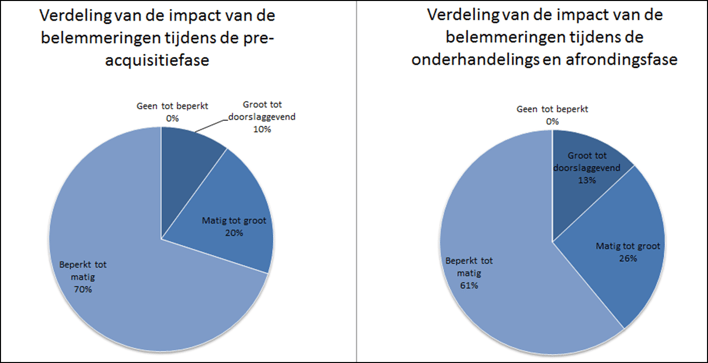
After the financial crisis, Mergers and Acquisition (M&A) transactions are finally on the rise again. Yet only for one in five cases do the negotiations turn out to be a successful transaction. We – Antwerp Management School, in association with the University of Antwerp, lawyer firm Quorum Law and consultancy agency Acqtion – conducted research to find out why this is the case.
Based on the answers of enterprise specialists at a previously released enquiry, a risk scale was drawn up. This scale ranges from 1 to 12, with 12 holding the biggest risk. While drawing up the scale, a distinction was made between the impact of a problem on the negotiations, and the probability of preventing this specific problem. The risk factor is therefore the product of the impact and the probability.
We discovered that the problems with the highest risk factor presented themselves during the pre-acquisition phase and that the negotiation and completion phase contained less dangerous obstacles. This is interesting because researchers mainly focused on these later phases in the negotiation process in previous studies. It could therefore be said that the most dangerous problems were being overlooked.
 Source: own composition based on qualitative research
Source: own composition based on qualitative research
Another interesting thing to note is the fact that problems with the highest general risk factor are in the first phase, but that problems in the later phases in general have a larger impact on the negotiations. This means that these problems generally occur less frequently, but when they do pop up, they are usually deal breakers.
 Source: own composition based on qualitative research
Source: own composition based on qualitative research
The problems in the pre-acquisition phase with a risk factor of more than 6 are mostly problems that lie with the seller. Arranged per risk factor, these are the most dangerous stumbling-blocks encountered during the pre-acquisition phase:
- Insufficient future cash flow
- Too high price expectations of the seller
- Dependence on a select number of customers and contracts
During the negotiation and completion phase, the biggest problems are due to the potential lack of experience of either the buying or the selling party. Another big problem is the difference between the buyer and the seller’s company culture. However, these are all hindrances that could be avoided – or at least reduced in risk – by a good preparation.
Want to know what the other success factors
for merger and acquistions processes are?



